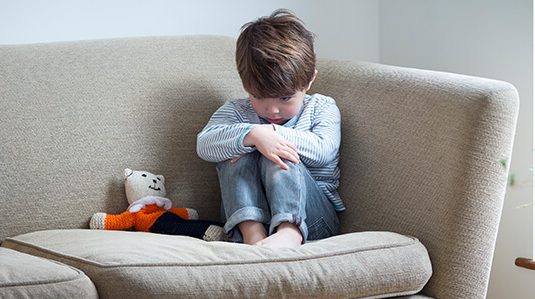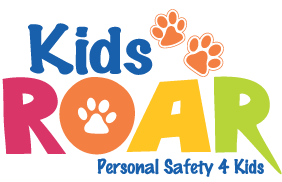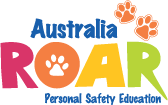KidsROAR delivers engaging Protective Behaviours programs that focus on ‘Personal Safety 4 Kids’.
Our personal safety and child abuse prevention programs are age and stage appropriate and suitable for children from the age of three. Personal Safety education is vital, as one in five children will experience sexual abuse before their 18th birthday (Pereda, et, al 2009) with the most vulnerable being between 3-8 years of age.
Educating children, parents, teachers, educators and other individuals in the community with an evidence based, early intervention program, significantly reduces a child’s vulnerability to all forms of abuse, including family violence. We believe that a three-way partnership between school, home and the community is the most effective way to deliver a consistent message about Personal Safety 4 Kids.
What is Protective Behaviours?
Protective Behaviours is a world-wide recognised program that aims to promote personal safety skills for children and adults. By creating an awareness of ‘safe’ behaviours, people are empowered to use strategies that will help to prevent abuse, reduce violence in the community, and promote positive health and well-being.
Protective Behaviours has two Core Themes that are emphasized throughout the KidsROAR Programs.
Theme 1: We all have the right to feel safe at all times.
Theme 2: We can talk about anything with someone we trust, no matter what it is.
The ‘ROAR’ in KidsROAR
By participating in an interactive KidsROAR session, children will develop a greater understanding of how important it is to ‘ROAR’….
Recognise – feelings, warning signs, safe/unsafe situations and secrets
Own – their body and understand it belongs to them
Assert – have confidence to implement the ‘No, Go, Tell’ strategy
Report – to their identified trusted adults and persist in telling them how they feel
KidsROAR Programs
We deliver engaging, age-appropriate, interactive programs to groups that facilitate open interaction between the participants and our team. Our dynamic, caring team of professionals deliver sessions to:
- Childcare Centres and Kindergartens
- Primary School Students
- Secondary School Students
- Teachers and Educators
- Families
- Community Groups and Organisations
Childcare Centres and Kindergartens
The KidsROAR Program for 3 to 5-year olds sets the foundation for understanding:
- Feelings
- Early warning signs
- Safe and unsafe behaviors
- The difference between public and private
- Their private body parts
- The difference between safe and unsafe secrets
- How to implement the NO, GO, TELL strategy
- Who their trusted adults are
Commencing the KidsROAR personal safety message as early as possible is vital to reducing a child’s vulnerability to abuse. Our programs include fun activities, songs and stories to engage the children throughout the session, whilst instilling key messages through repetition.
Primary Schools
To ensure that the teaching of vital, age appropriate protective behaviours are reinforced and developed, we recommend that the KidsROAR Program is delivered in each year of a child’s education, from Foundation through to Year 6. The KidsROAR Program and activities are in accordance with the Victorian Government’s Child Safe Standards and align with the Victorian Curriculum F – 10; Personal and Social Capability and Health and Physical Education Learning Areas. We will work closely with individual schools to complement any education and curriculum requirements that dovetail with our program.
Foundation to Year 4
Our Foundation to Year 4 programs emphasise the Protective Behaviours two Core Themes throughout each program. The scaffolded approach of our programs ensures that the students’ knowledge is built upon and complemented from the previous year’s learnings.
The KidsROAR sessions have been created so that by the end of the program, children will….
- Know that we all have the right to feel safe at all times
- Recognise safe and unsafe feelings
- Identify and act upon early warning signs
- Use correct anatomical names of the private parts of their body
- Identify and deal with inappropriate or “unsafe” touches
- Know that it is okay to say no to an adult in a situation where they feel unsafe, threatened or frightened
- Identify trusted adults they should talk to if they are feeling worried or unsafe
- Identify the difference between safe and unsafe secrets and understand that they can talk to a trusted adult about anything
- Learn how to persist if they are feeling unsafe by continuing to tell trusted adults until someone listens and they feel safe again
Completion of our programs every year will help empower the students to utilise the learned strategies to take charge of their own personal safety.
Year 5 and 6 – ‘We Can ROAR’ workshop
Students in years 5 and 6 are at pivotal age in the development of relationships that are respectful and safe. The ‘We Can ROAR’ Workshop supports students in developing and managing healthy relationships, and incorporates elements of Respectful Relationships, Protective Behaviours and Bullying, in a workshop format.
Topics include:
Respect and Consent
- Feelings – recognise own and others feelings
- Self-respect and respecting others
- Consent – what is it, how to get it
- Personal space – what is it
The B Word
- Types of Bullying
- Effects of Bullying
- Bullying and the law
- Strategies to deal with bullying behaviours
Body Safety
- Early warning signs
- Correct anatomical names of private parts of the body
- Identifying a Safety Network
- ‘Safe’ and ‘unsafe’ secrets
- Family ‘safe’ word


Child Abuse Statistics
- 1 in 4 children have witnessed violence against a parent. (NAPCAN)
- 1 in 5 children will experience sexual abuse before their 18th birthday. (Pereda, et al, 2009)
- In approximately 94% of cases of sexual abuse the child will know their offender. (NSW Commission for Children and Young People, 2009)
- The most vulnerable age for children to be exposed to sexual assault is between the ages of 3 – 8 years. (Browne & Lynch,1994)
- 73% of child victims do not report the abuse for at least 1 year, 45% do not tell for 5 years, and some never tell. (Broman-Fulks, et al, 2007)
- Studies show offenders are less likely to offend on children who know the correct anatomical names of the private parts of their body, as it suggests that they have had some form of education on personal body safety.
- Female victims of child sexual abuse were shown to be at 40 times higher risk of suicide. (DHS Victoria Conference May 2012)
- Children with disabilities are up to 7 times more likely to be sexually abused than children without a disability. (Briggs 2006)
The Workshops are run in a rotational, interactive format that delivers education in a high energy environment using music, videos, role-plays and other activities to challenge participants. After taking part in the ‘We Can ROAR’ Workshop, students will have a greater understanding of the importance of developing respectful and safe relationships
Secondary Schools
KidsROAR offers tailored programs for Secondary Schools that explore the consequences of risk taking and unsafe behaviour. Working closely with individual schools we can customise a program that supports and complements units of work within the school’s curriculum.
Customised programs can incorporate any of the following:
- Choices
- Risk taking
- Peer Pressure
- Party safety
- Looking after your friends
- Personal safety online/offline
- Bullying, Stalking and Sexual Assault
- The Law and the legal consequences of their actions
Sessions can be presented in an auditorium style setting or delivered in a class size environment.
We believe it is vital that secondary school students are educated on topics that explore Choices and Personal Safety. We often hear ‘we trust our child’, ‘our child is mature’ or ‘they are computer savvy’, but the truth is that ALL students are vulnerable when confronted with difficult choices. Our programs raise these very important issues in an open, interactive manner that will instigate further discussion with their teachers, friends and families.
Education Programs for Family and Friends
Helping Kids ‘ROAR’
Parents, carers and friends are introduced to the concept of Protective Behaviours and given an overview of the skills and strategies the children will learn during the KidsROAR session, and the importance of starting personal safety education as early as possible.
Ongoing reinforcement of the skills and strategies can ensure children feel empowered to protect their own personal safety.
Topic covered include:
- What is Protective Behaviours education
- Statistics on abuse
- Information on offenders and grooming
- KidsROAR session content
- How to implement Protective Behaviours themes
Professional Development for Teachers and Educators
ROAR Australia offers Professional Development programs for Early Years, Primary and Secondary School employees. These sessions ensure that the learned strategies can be continuously reinforced by the children’s trusted adults at school and at home.
Refer to ROAR Education page for more details.


